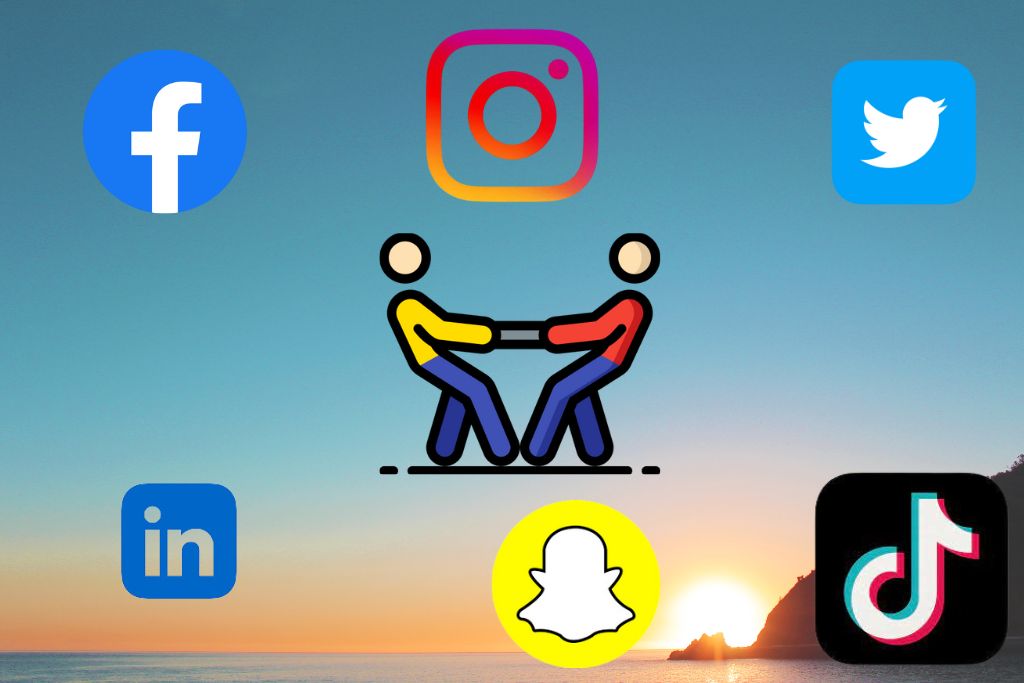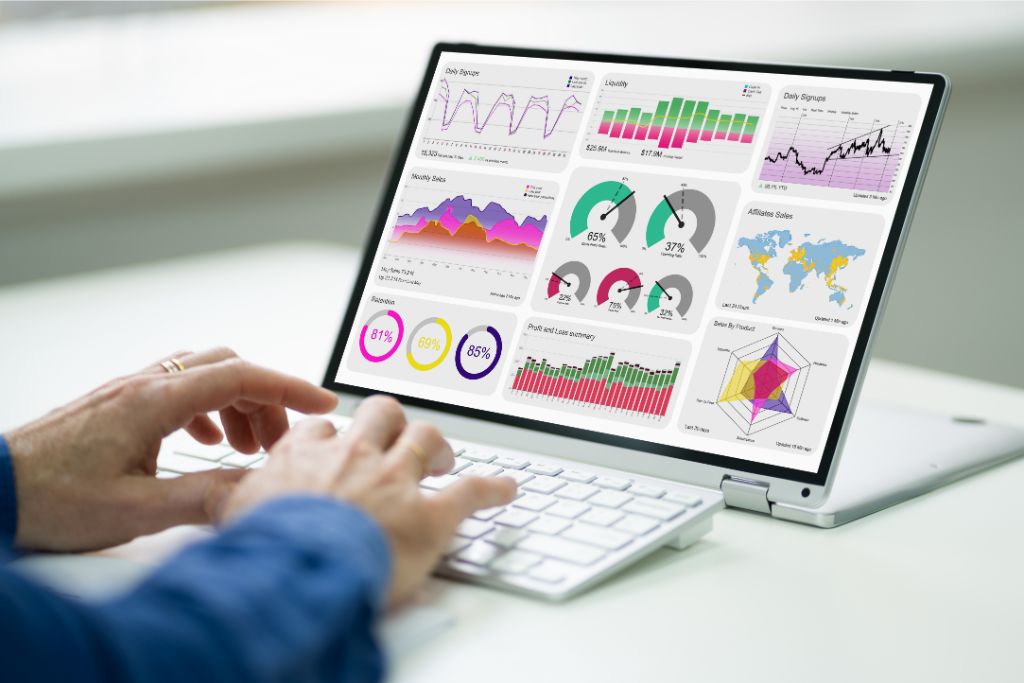Are you an indie game developer, brimming with creativity yet feeling invisible? You’re far from alone. A top-notch social media strategy can be your ace in the hole. It’s not just about tweeting or posting. It’s about stirring up your community and exploiting the optimal channels.
Let’s unpack practical strategies to boost your social media presence and convert those likes into game downloads!
Engage Your Audience:
Get involved in conversations, reply to comments, and keep the dialogue flowing. This keeps your audience interested and builds a strong community around your game.
Choose your Platforms Wisely:
You don’t have to be on every social media platform. Discover where your audience hangs out and focus your efforts there.
Promote Authenticity:
Promote your game in a way that’s genuine to your brand. Authenticity resonates with players and can lead to increased downloads.
Consistently Share Updates:
Keep your community in the loop with regular updates. Let them know whether it’s a new game level or a bug fix. This keeps players engaged and excited for what’s coming next.
Leverage Influencer Marketing:
Work with influencers in your niche. Their endorsement can widen your reach and increase game downloads.
Now, turn those likes into downloads!
Table of Contents
- 1 Understand Your Audience
- 2 Choose the Right Platforms
- 3 Create Engaging Content
- 4 Engage with Your Community
- 5 Leverage Influencer Marketing
- 6 Utilize Paid Advertising
- 7 Monitor Your Performance
- 8 Keep Up with Industry Trends
- 9 BONUS
- 10 Frequently Asked Questions
- 10.1 What are some legal considerations indie game developers need to be aware of when using social media?
- 10.2 How can indie game developers handle negative feedback or criticism on social media platforms?
- 10.3 How can indie game developers manage their time effectively while maintaining their social media presence?
- 10.4 Are there any specific social media strategies for indie game developers targeting a global audience?
- 10.5 How can indie game developers protect their intellectual property while promoting their games on social media?
Understand Your Audience

You’ve got to understand your audience’s interests and preferences to tailor your social media strategy effectively.
As an indie game developer, audience segmentation and interest identification are crucial to building a solid online presence. Start by classifying your followers into different groups based on their gaming preferences. Are they into RPGs or more drawn to puzzle games?
Use tools like Facebook’s Audience Insights or Twitter’s analytics to examine the demographics and behavior of your followers. Understanding these nuances helps you craft content that resonates with each segment.
Interest identification is another essential piece of the puzzle. Identify what topics excite your audience beyond gaming. Do they love discussing game theories, fan art, or behind-the-scenes development processes?
Once you figure this out, use it as a guiding light for creating engaging posts. Remember, social media isn’t ‘one size fits all.’ Your content should be as diverse as your audience base.
Choose the Right Platforms

Identifying and utilizing the appropriate platforms that will effectively reach your target audience is crucial. This involves understanding platform suitability, which means knowing where your potential gamers hang out online. Are they swapping strategies on Reddit, sharing playthroughs on YouTube, or engaging in fandoms on Instagram? You need to be there.
However, don’t just park on one platform and call it a day. Platform diversification is equally key in the gaming industry. While you might find a significant chunk of your players on Twitch, others might stumble upon your game through Twitter hashtags or Facebook groups. Diversify your presence across social media channels while honing a consistent brand voice.
Creating compelling content is another critical factor. Whether you’re crafting gripping trailers for YouTube or quirky GIFs for Twitter, ensure your content resonates with each platform’s demographic and culture.
Create Engaging Content
In the ever-evolving gaming industry, you know how crucial it is to stand out. To grab your audience’s attention and keep them hooked, you’ve got to use eye-catching visuals that tell a story even before they hit ‘play.’
But don’t stop there – invite them into your world by sharing behind-the-scenes stories and watch as your social media engagement soars.
Use Eye-Catching Visuals
Don’t underestimate the power of eye-catching visuals when promoting your indie game on social media. The importance of visual aesthetics can’t be overstated, and effective graphic design techniques are your best ally here.
- Use high-quality images that give a taste of gameplay.
- Incorporate unique, visually striking elements that align with your game’s theme.
- Use GIFs or short videos to show action-packed sequences or highlight special features.
Remember, on social platforms like Instagram or Twitter, you compete for attention against countless other posts. Your visuals need to stand out. They should draw the viewer in and tell them about the gameplay experience they can expect.
So, use those graphic design skills and let your game shine!
Share Behind-the-Scenes Stories
Sharing behind-the-scenes stories can humanize your team and generate interest in your project. Utilizing storytelling techniques, you can pull back the curtain to reveal the hard work that goes into game development. This boosts content authenticity and builds a stronger connection with your audience.
Consider showcasing different aspects of game creation:
| Aspect | Why Share? | Platform Best Suited |
|---|---|---|
| Concept Art | Demonstrates artistic process | |
| Coding Snippets | Highlights technical expertise | |
| Team Meetings | Shows collaborative efforts | Facebook Live |
| Game Testing Sessions | Offers sneak peek into gameplay | YouTube |
Engage with Your Community

You’ll find that engaging with your community is crucial in promoting your indie game on social media. The key here is community outreach, which isn’t just about broadcasting your content but creating an open dialogue with gamers who might be interested in what you’re crafting.
Start by sharing updates and asking for input. This makes your audience feel invested in the development process, spurring them to share your game with their networks. When they offer feedback, please don’t dismiss it; instead, take the opportunity to implement this valuable insight into your game’s evolution.
Social media platforms like Discord or Reddit are perfect for fostering these discussions. You can create dedicated channels or threads where fans can ask questions, suggest improvements, and even share fan-made content – all while creating hype around your project.
This constant engagement builds up a sense of camaraderie and anticipation among gamers who appreciate being part of the journey. Remember: You’re not just making a product; you’re cultivating a community that will champion your game because they’ve played an active role in its creation.
Leverage Influencer Marketing
Leveraging influencer marketing can be incredibly effective in increasing your project’s visibility. As an indie game developer, you should capitalize on the power of social media platforms and their influencers. By fostering influencer collaborations and exploring sponsorship opportunities, you boost your game’s exposure and build credibility in the gaming community.
Here are some strategies to help you navigate influencer marketing:
- Identify relevant influencers:
- Gamers who play similar genres
- Streamers with a considerable following
- Establish relationships:
- Engage with their content
- Offer exclusive access or early beta tests
You’re not just selling a game; you’re telling a story. Make sure it’s interesting enough for influencers to share with their followers. Sponsorship opportunities are also essential; they don’t need to break the bank, and small tokens of appreciation can go a long way.
Utilize Paid Advertising
Now that we’ve explored the power of influencer marketing let’s shift our attention to a more direct approach – paid advertising.
Harnessing ad targeting techniques can skyrocket your game’s visibility in a competitive marketplace. When working with a limited budget, every dollar counts; targeting your ads effectively is crucial. What does this mean for you? It means knowing your audience and tailoring your ads to their interests.
Don’t just consider demographics like age or location; consider what games they play, their platforms, and even what content they engage with most. All these factors can help shape your ad campaign and ensure it reaches the right people.
But remember, effective ad targeting is only half the story; budget management is equally vital in successful campaigns. You must allocate resources wisely—experiment with different platforms, test various ads, track performance meticulously, and funnel more funds into what works best.
Paid advertising might seem daunting at first glance, but remember—it’s not about big budgets but intelligent spending. So go ahead, put on that strategic hat, and explore how paid advertising can open new doors for indie game developers like yourself.
Monitor Your Performance
In the ever-evolving world of gaming, understanding your audience is crucial. That’s where social media analytics come into play. You’re not just throwing posts out into the void; using these tools, you can track engagement, measure success, and see what resonates with your followers.
Don’t be afraid to pivot. Use this data to adjust your strategy, ensuring your content hits home every time.
Use Social Media Analytics

Using social media analytics can significantly improve your game’s visibility and popularity. These tools allow for analyzing competitor strategies, spotting trends, and applying predictive analytics to anticipate player behavior.
Here are three ways you can utilize them:
- Competitor analysis: Keep tabs on similar games in the market. Look at their engagement rates, post frequency, and community feedback. Learn from their successes and mistakes.
- Predictive analytics application: Use historical data to forecast future trends. Predict what content will resonate with your audience and when’s the best time to post it.
- Content optimization: Analyze which posts get the most engagement and why. Use this information to drive your future content strategy.
Adjust Your Strategy Based on Data
Adjusting your strategy based on data isn’t just a smart move. It’s essential for success in today’s competitive market. Data interpretation is your guiding light in the gaming industry, where trends and player behavior evolve rapidly. It tells you what works and what doesn’t.
Don’t get stuck with an outdated approach. Use social media metrics to modify your strategies in a timely. Notice a rise in engagement when you post gameplay clips on Twitter? Make that a regular thing! Seeing positive feedback from Facebook live Q&As? Schedule them more frequently!
Keep Up with Industry Trends
Staying on top of industry trends isn’t just beneficial. It’s essential for indie game developers aiming to make their mark in the social media landscape. This is where trend analysis comes into play.
It’s not enough to know what’s happening now; you need to anticipate future predictions. Consider platforms like Twitter, Twitch, and TikTok. They’re constantly evolving with gaming content that ranges from gameplay clips and live streams to fan art – each carrying its own set of trending topics.
You’ve got to keep your finger on the pulse and adapt your strategy accordingly. But don’t just unthinkingly follow each trend; assess how they align with your game style and audience preferences. Crafting posts that integrate current trends while staying authentic can boost visibility tremendously.
Remember, transient trends often carry valuable insights about shifts in consumer behavior or emerging platforms worth exploring. So stay informed but discerning- not every trend will be applicable or beneficial for you.
BONUS
Level up your indie game’s social media strategy with OnlySocial’s essential Post Planning and Scheduling function. Seamlessly plan and schedule your posts across all social networks, ensuring consistent and strategic content delivery. With unlimited posting and the ability to manage unlimited social profiles, you can expand your online presence without limitations. Don’t miss out on optimizing your social media strategy. Sign up for a commitment-free 7-day trial today.
Frequently Asked Questions
What are some legal considerations indie game developers need to be aware of when using social media?
Understand the Privacy Policies of the platforms you’re on. Safeguarding user data is key. Be wary of Defamation Risks. Steer clear from hurtful speech or untrue statements about industry peers. Always stay informed and show respect.
How can indie game developers handle negative feedback or criticism on social media platforms?
Stay cool with trolls, keeping your professionalism intact. Avoid getting sucked into debates. Examine feedback with a critical eye, distinguishing helpful critique from simple negativity. Use these insights to enhance your game and bolster your online community image.
How can indie game developers manage their time effectively while maintaining their social media presence?
Take advantage of social media automation tools. This helps in scheduling posts, freeing up your precious time. Consider teaming up with influencers for a broader reach and interaction. Remember, in the gaming industry, it’s about working smart, not just hard.
Are there any specific social media strategies for indie game developers targeting a global audience?
Definitely! Try techniques that spark global interaction. How? Create content in various languages. Adjust to diverse time zones. Post in more than one language. Mingle within global gaming circles. This amplifies your game’s charm and visibility everywhere.
How can indie game developers protect their intellectual property while promoting their games on social media?
Protect your game! Use digital watermarks on visuals and register copyrights. Remember, share only teasers, not complete gameplay. This way, you maintain intrigue and safeguard your intellectual property.




